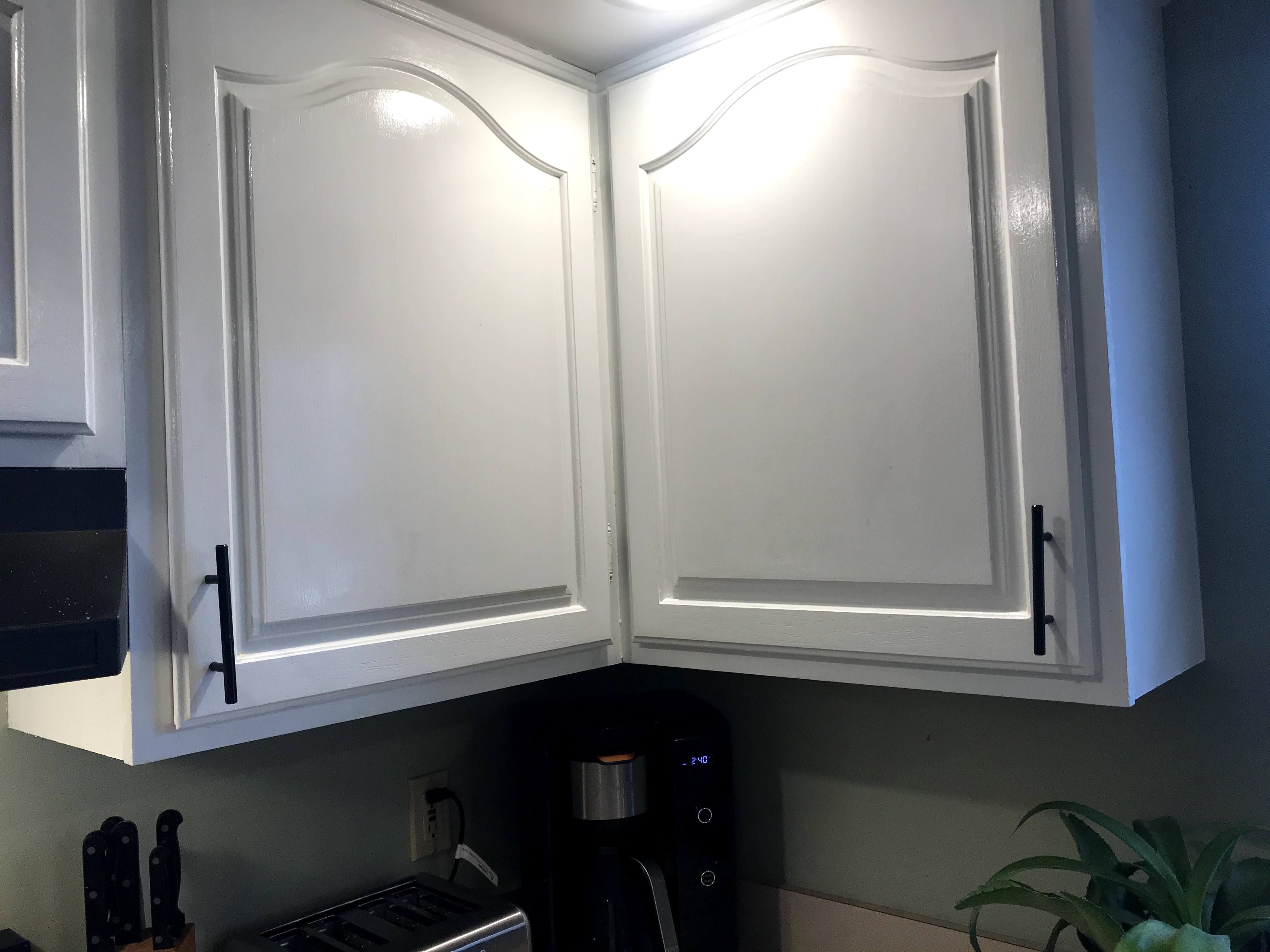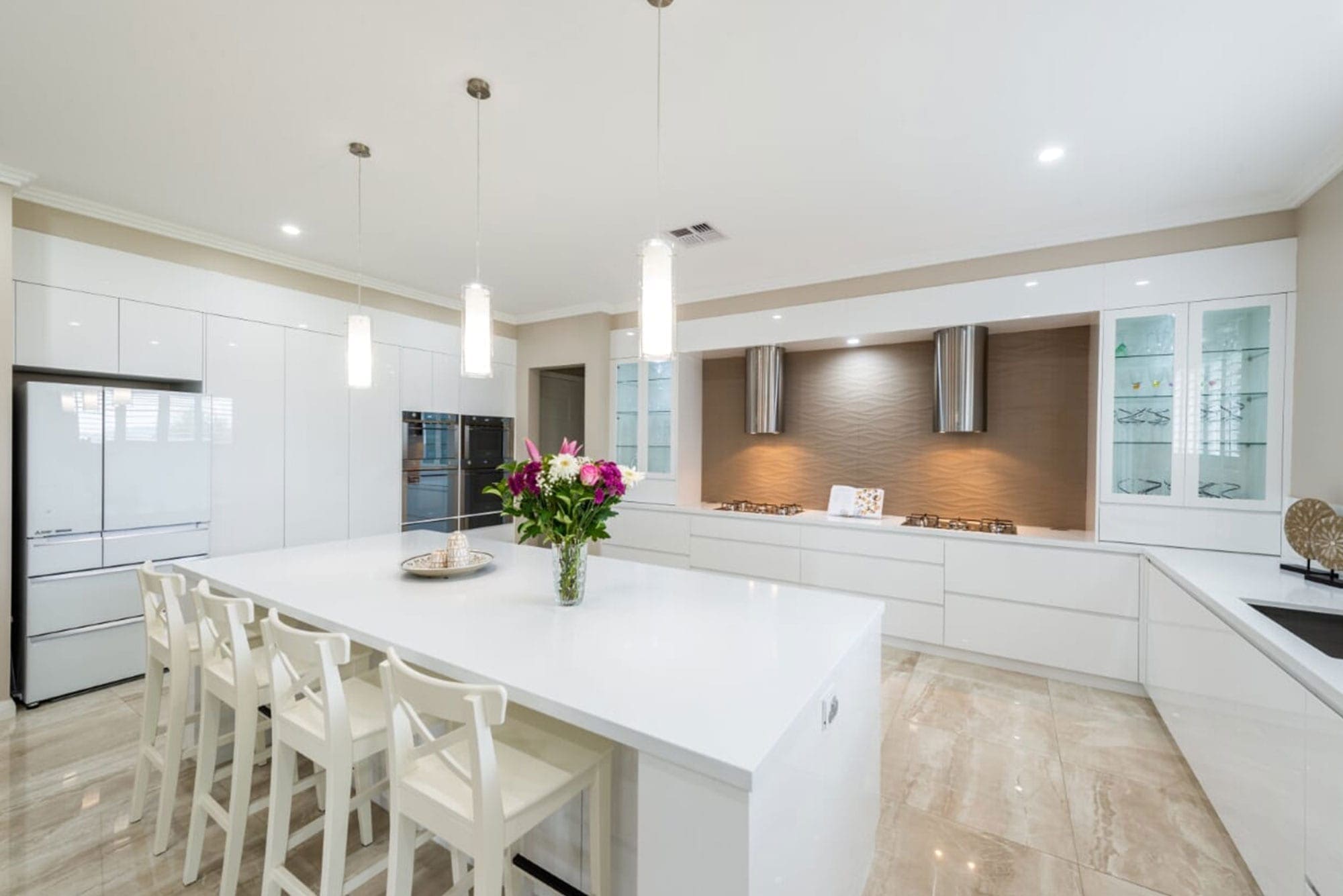Types of Polyurethane for Kitchen Cabinets

Choosing the right polyurethane finish for your kitchen cabinets is crucial for both aesthetics and longevity. The type of polyurethane you select will significantly impact the final look, durability, and ease of maintenance. This section details the key differences between the most common types: water-based, oil-based, and solvent-based polyurethanes.
Polyurethane Finish Comparison, Best polyurethane for kitchen cabinets
The following table summarizes the key characteristics of each type of polyurethane finish for kitchen cabinets:
| Finish Type | Durability | Application | Drying Time |
|---|---|---|---|
| Water-Based Polyurethane | Good; less durable than oil-based in high-traffic areas, but offers excellent protection in most kitchens. | Easy; brushes, rollers, or sprayers can be used. Cleanup is simple with soap and water. | Relatively fast; typically dries to the touch within 1-2 hours and fully cures in 24-48 hours. |
| Oil-Based Polyurethane | Excellent; offers superior scratch and stain resistance, making it ideal for high-use kitchen cabinets. | More challenging; requires mineral spirits for cleanup. Brushes or rollers are common application methods. | Significantly longer; can take several hours to dry to the touch and up to several days for complete curing. |
| Solvent-Based Polyurethane | Very good; offers a durable finish similar to oil-based but with potentially faster drying times depending on the specific product. | Typically sprayed; requires specialized equipment and ventilation due to strong solvents. Cleanup involves solvents. | Varies greatly depending on the specific solvent and formulation; consult the product’s instructions. |
Advantages and Disadvantages of Each Polyurethane Type
Each type of polyurethane presents unique advantages and disadvantages when applied to kitchen cabinets:
Best polyurethane for kitchen cabinets – Water-based polyurethane is favored for its low odor, easy cleanup, and relatively quick drying time. However, it might not offer the same level of scratch and stain resistance as oil-based options. It’s a good choice for kitchens with moderate use.
Oil-based polyurethane provides superior durability and protection against scratches and stains, making it ideal for high-traffic areas. The downside is the strong odor, longer drying time, and the need for mineral spirits for cleanup. This is a top choice for durability, but requires more patience.
Solvent-based polyurethane offers a balance between durability and drying time. It often provides a hard, durable finish, but the strong solvents necessitate careful ventilation and specialized application equipment. This is an excellent option for professional applicators or those comfortable with spray equipment.
Visual Representation of Polyurethane Application
Imagine three separate visual sequences, one for each polyurethane type. Each sequence would show three stages:
Water-Based Polyurethane Application:
Stage 1: A cabinet door is prepared, lightly sanded and cleaned. A brush applies a thin, even coat of water-based polyurethane.
Stage 2: The wet coat shows a slightly glossy sheen. The surface is left to dry for the specified time (1-2 hours).
Stage 3: After 24-48 hours, the cabinet door displays a smooth, clear finish. Light sanding might be necessary between coats if more than one is applied.
Oil-Based Polyurethane Application:
Stage 1: Similar preparation to water-based, but with mineral spirits used for cleaning. A brush or roller applies a thin, even coat of oil-based polyurethane.
Stage 2: The wet coat appears slightly more glossy and slower drying. The surface is left to dry for several hours.
Stage 3: After several days of drying, the cabinet door displays a very durable, hard finish. Sanding between coats is often necessary for a smooth finish.
Solvent-Based Polyurethane Application:
Stage 1: Preparation involves careful masking and ventilation. A sprayer applies a thin, even coat.
Stage 2: The drying process is quicker than oil-based but still requires several hours.
Stage 3: After drying, the cabinet door displays a durable, smooth finish. Due to the potential for runs or drips, precise application is critical.
Choosing the Right Sheen for Kitchen Cabinets: Best Polyurethane For Kitchen Cabinets

Selecting the appropriate sheen for your kitchen cabinets is a crucial design decision. The sheen level significantly impacts the overall look and feel of your kitchen, affecting everything from the perceived size of the space to the way light reflects off the surfaces. Choosing wisely will ensure your cabinets complement your kitchen’s style and create the atmosphere you desire.
The sheen of a polyurethane finish refers to how much light it reflects. Different sheen levels create vastly different visual effects, influencing the mood and practicality of your kitchen. A higher gloss will amplify light, while a matte finish will absorb it.
Sheen Levels and Their Visual Appearance
Several sheen levels are available in polyurethane finishes, each offering a unique aesthetic. Understanding these differences will help you choose the best option for your kitchen.
- Gloss: Gloss polyurethane reflects the most light, creating a high-shine, reflective surface. It’s very durable but can show fingerprints and imperfections more easily. Gloss cabinets often lend a modern, sleek, or even glamorous feel to a kitchen.
- Semi-gloss: Semi-gloss offers a good balance between shine and durability. It reflects a significant amount of light but is less prone to showing imperfections than a high-gloss finish. This sheen level is versatile and works well in many kitchen styles.
- Satin: Satin polyurethane provides a soft, subtle sheen. It’s less reflective than semi-gloss but still offers a degree of shine. Satin finishes are known for their elegance and ability to mask minor imperfections, making them a popular choice for traditional or transitional kitchens.
- Matte (or Flat): Matte polyurethane reflects the least amount of light, creating a smooth, non-reflective surface. It’s excellent at hiding imperfections but requires more careful cleaning to prevent staining. Matte finishes are often preferred in more rustic or farmhouse-style kitchens.
Sheen’s Impact on Kitchen Size and Brightness
The sheen level you choose can dramatically affect the perceived size and brightness of your kitchen. High-gloss finishes, with their reflective properties, can make a small kitchen feel larger and brighter by bouncing light around the space. Conversely, matte finishes, while elegant, can absorb light, potentially making a small kitchen feel darker and more enclosed. In larger kitchens, the choice is less critical, offering more design flexibility.
Examples of Kitchen Cabinet Designs Utilizing Different Sheen Levels
Consider these examples to visualize how different sheen levels impact the overall kitchen aesthetic:
- Modern Kitchen with Glossy White Cabinets: A modern kitchen featuring high-gloss white cabinets creates a clean, bright, and expansive feel. The reflective surface maximizes light, enhancing the sense of spaciousness. The sleekness of the gloss complements the minimalist style.
- Traditional Kitchen with Satin-Finished Wood Cabinets: A traditional kitchen with satin-finished wood cabinets offers a warm, inviting atmosphere. The subtle sheen enhances the natural beauty of the wood without being overly reflective. This choice complements the classic details and creates a sense of timeless elegance.
- Rustic Farmhouse Kitchen with Matte Black Cabinets: A rustic farmhouse kitchen with matte black cabinets creates a dramatic and cozy atmosphere. The non-reflective surface adds depth and texture, complementing the overall rustic aesthetic. The matte finish helps to downplay any imperfections in the wood, contributing to the homey feel.
Application and Maintenance of Polyurethane on Kitchen Cabinets

Applying polyurethane to your kitchen cabinets can dramatically improve their look and durability. Proper preparation and technique are key to achieving a professional-looking, long-lasting finish. This section details the process, common problems, and solutions.
Step-by-Step Polyurethane Application
Careful preparation is crucial for a successful finish. Skipping steps will likely result in a less-than-perfect outcome. The following steps will guide you through the process.
- Surface Preparation: Thoroughly clean the cabinet surfaces with a degreaser to remove any grease, dirt, or old finish. Sand with fine-grit sandpaper (180-220 grit) to create a smooth surface and ensure proper adhesion. Wipe away all sanding dust with a tack cloth.
- Application: Polyurethane can be applied with a brush, roller, or spray gun. Brushes provide excellent control for detail work, rollers offer quicker coverage for larger surfaces, and spray guns provide the smoothest finish but require more setup and cleanup. Always apply thin, even coats, allowing each coat to dry completely before applying the next. Follow the manufacturer’s instructions for drying times.
- Drying Time: Drying times vary depending on the type of polyurethane, temperature, and humidity. Allow ample drying time between coats to prevent runs and ensure proper curing. Generally, each coat requires several hours to dry to the touch, and a full 24 hours before applying the next coat. For a final, durable finish, it’s essential to allow adequate curing time (often several days).
- Number of Coats: Most projects benefit from at least two to three coats of polyurethane for optimum protection and durability. More coats may be necessary depending on the desired level of protection and the condition of the underlying finish.
Troubleshooting Polyurethane Application
Even experienced applicators encounter occasional problems. Understanding common issues and their solutions can prevent frustration and ensure a quality finish.
- Drips: Drips occur when too much polyurethane is applied at once or when the surface is uneven. To avoid drips, apply thin coats and work quickly and evenly. If drips do occur, carefully remove them with a damp cloth before they dry completely.
- Bubbles: Bubbles are usually caused by trapped air or applying the polyurethane in too thick a layer or over a surface that hasn’t been properly prepared. Applying thin, even coats and using a good quality brush or roller will greatly reduce this problem. Lightly sanding between coats can also help to minimize bubbles.
- Uneven Finish: An uneven finish can result from improper surface preparation, inconsistent application, or insufficient drying time between coats. Careful sanding between coats can correct minor imperfections. For more severe issues, additional coats may be necessary.
Rewritten Article: Best Polyurethane for Kitchen Cabinets
Choosing the right polyurethane for your kitchen cabinets is crucial for a durable and beautiful finish. Forget the hype; what truly matters is understanding your needs. Do you want a high-gloss shine or a more subtle matte finish? Are you looking for superior scratch resistance? These factors will guide your decision. Oil-based polyurethanes are known for their exceptional durability and deep, rich look, though they have a longer drying time and require mineral spirits for cleanup. Water-based polyurethanes offer a quicker drying time, easier cleanup with soap and water, and are often preferred for their lower odor. Ultimately, the “best” polyurethane is the one that best suits your project and personal preferences. Read reviews, compare options, and consider your skill level before making a choice. Don’t be afraid to ask for advice from experienced painters or hardware store professionals; they can offer valuable insights based on their expertise and experience with various products.
